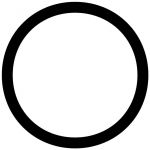Not a member of Pastebin yet?
Sign Up,
it unlocks many cool features!
- from unittest import TestCase
- class Point:
- def __init__(self, x, y, a, b):
- self.a = a
- self.b = b
- self.x = x
- self.y = y
- if self.x is None and self.y is None:
- return
- # TODO 1 - Implement a check if the point is on the curve.
- #raise ValueError('({}, {}) is not on the curve'.format(x, y))
- def __eq__(self, other):
- return self.x == other.x and self.y == other.y \
- and self.a == other.a and self.b == other.b
- def __ne__(self, other):
- # this should be the inverse of the == operator
- return not (self == other)
- def __repr__(self):
- if self.x is None:
- return 'Point(infinity)'
- elif isinstance(self.x, FieldElement):
- return 'Point({},{})_{}_{} FieldElement({})'.format(
- self.x.num, self.y.num, self.a.num, self.b.num, self.x.prime)
- else:
- return 'Point({},{})_{}_{}'.format(self.x, self.y, self.a, self.b)
- def __add__(self, other):
- if self.a != other.a or self.b != other.b:
- raise TypeError('Points {}, {} are not on the same curve'.format(self, other))
- # Case 0.0: self is the point at infinity, return other
- if self.x is None:
- return other
- # Case 0.1: other is the point at infinity, return self
- if other.x is None:
- return self
- # TODO 2 - Implement point add when self.x == other.x and self.y != other.y. Result is point at infinity
- # Case 2: self.x ≠ other.x
- # Formula (x3,y3)==(x1,y1)+(x2,y2)
- # s=(y2-y1)/(x2-x1)
- # x3=s**2-x1-x2
- # y3=s*(x1-x3)-y1
- if self.x != other.x:
- s = (other.y - self.y) / (other.x - self.x)
- x = s**2 - self.x - other.x
- y = s * (self.x - x) - self.y
- return self.__class__(x, y, self.a, self.b)
- # Case 4: if we are tangent to the vertical line,
- # we return the point at infinity
- # note instead of figuring out what 0 is for each type
- # we just use 0 * self.x
- if self == other and self.y == 0 * self.x:
- return self.__class__(None, None, self.a, self.b)
- # Formula (x3,y3)=(x1,y1)+(x1,y1)
- # s=(3*x1**2+a)/(2*y1)
- # x3=s**2-2*x1
- # y3=s*(x1-x3)-y1
- if self == other:
- # TODO 3 - Implement point add when self == other
- def __rmul__(self, coefficient):
- coef = coefficient
- current = self
- result = self.__class__(None, None, self.a, self.b)
- while coef:
- if coef & 1:
- result += current
- current += current
- coef >>= 1
- return result
- class PointTest(TestCase):
- def test_ne(self):
- a = Point(x=3, y=-7, a=5, b=7)
- b = Point(x=18, y=77, a=5, b=7)
- self.assertTrue(a != b)
- self.assertFalse(a != a)
- def test_on_curve(self):
- with self.assertRaises(ValueError):
- Point(x=-2, y=4, a=5, b=7)
- # these should not raise an error
- Point(x=3, y=-7, a=5, b=7)
- Point(x=18, y=77, a=5, b=7)
- def test_add0(self):
- a = Point(x=None, y=None, a=5, b=7)
- b = Point(x=2, y=5, a=5, b=7)
- c = Point(x=2, y=-5, a=5, b=7)
- self.assertEqual(a + b, b)
- self.assertEqual(b + a, b)
- self.assertEqual(b + c, a)
- def test_add1(self):
- a = Point(x=3, y=7, a=5, b=7)
- b = Point(x=-1, y=-1, a=5, b=7)
- self.assertEqual(a + b, Point(x=2, y=-5, a=5, b=7))
- def test_add2(self):
- a = Point(x=-1, y=1, a=5, b=7)
- self.assertEqual(a + a, Point(x=18, y=-77, a=5, b=7))
Advertisement
Add Comment
Please, Sign In to add comment

